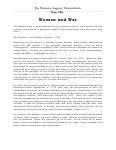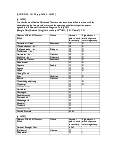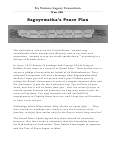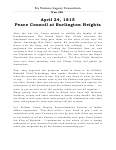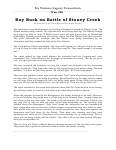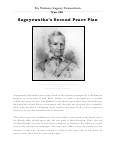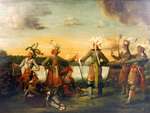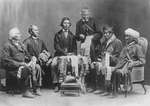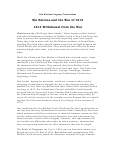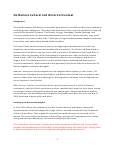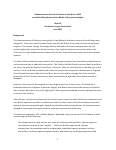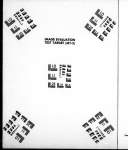Results




Page 2 of 2
- A collection of speeches delivered by Native Chiefs spanning the years 1710 to 1805. The source of the text is the book 'Speeches Delivered By Several Indian Chiefs', published in 1812. Included in tA collection of speeches delivered by Native Chiefs spanning the years 1710 …
- Sixty-Second in a 62 part series, Women and War describes how women often suffered the most from the violence of the War of 1812.Sixty-Second in a 62 part series, Women and War describes how women …
- A list of Widows of Indian Chiefs and Warriors who have fallen in the call of duty. Researched and compiled by the Six Nations Legacy Consortium.A list of Widows of Indian Chiefs and Warriors who have fallen …
- Fifth in a 62 part series, Sagoyewatha’s Peace Plan describes the only time in history where the Iroquois Confederacy and the Covenant Chain is broken as Seneca’s side with the United States and theFifth in a 62 part series, Sagoyewatha’s Peace Plan describes the only …
- Illustration from the book "Brock Centenary: 1812-1912" by Alexander Frasier showing the delegation of Six Nations representatives for the rededication cremonies of Brock's Monument at Queenston HeigIllustration from the book "Brock Centenary: 1812-1912" by Alexander Frasier showing the …
- Thirty-Eighth in a 62 part series, Peace Council at Burlington Heights, Describes the events of the Peace Council meeting at Burlington Heights on April 24, 1815Thirty-Eighth in a 62 part series, Peace Council at Burlington Heights, Describes …
- Fortieth in a 62 part series, Roy Buck on Battle of Stoney Creek is an excerpt of an interview with Roy Buck on the subject of the Battle of Stoney CreekFortieth in a 62 part series, Roy Buck on Battle of Stoney …
- Forty-Eighth in a 62 part series, Sagoyewatha’s Second Peace Plan describes Red Jacket’s proposal to Buffalo Creek chiefs to withdraw from The War of 1812Forty-Eighth in a 62 part series, Sagoyewatha’s Second Peace Plan describes Red …
- Image of Painting (oil on canvas) of Tommy Jemmy (Soo-non-gize, or Long Horns)a Seneca Chief. Noted for killing a Seneca Woman (Kau-qua-tau) for witchcraft and the large court proceeding and trial thImage of Painting (oil on canvas) of Tommy Jemmy (Soo-non-gize, or Long …
- Oil painting depicting a group of seven Seneca warriors in repose, standing and seated, overlooking the Niagara Gorge and FallsOil painting depicting a group of seven Seneca warriors in repose, standing …
- Wampum belt giver to the Chiefs at Grand River to support a plea for neutrality in 1812. In June of 1812, Seneca, Onondaga and Cayuga Chiefs living at Buffalo Creek came to a council at Grand River.Wampum belt giver to the Chiefs at Grand River to support a …
- Image of Jimmy Johnson (Sos-heo-wa) taken from a daugerreotype. Sos-heo-wa became a chief at Tonawanda. During the crisis with the Ogden Land Company after the signing of the Treaty of Buffalo CreekImage of Jimmy Johnson (Sos-heo-wa) taken from a daugerreotype. Sos-heo-wa became a …
- source: Smithsonian Institutionsource: Smithsonian Institution
- Describes the involvement of Red Jacket and the Buffalo Creek warriors in some of the final battles of the War of 1812.Describes the involvement of Red Jacket and the Buffalo Creek warriors in …
- Retrospective overview of the War of 1812, with a particular emphasis on the involvement of Native Allies in the conflict.Retrospective overview of the War of 1812, with a particular emphasis on …
- Retrospective overview of the War of 1812, with a particular emphasis on the involvement of Native groups in the conflict.Retrospective overview of the War of 1812, with a particular emphasis on …
- Describes the ten major themes of the War of 1812 which are particularly relevant to Six Nations communities. Researched by the Six Nations Legacy ConsortiumDescribes the ten major themes of the War of 1812 which are …
- Text excerpted from the book ‘The Employment of Indians in the War of 1812’. The book describes the participation of First Nations warriors in the War of 1812.Text excerpted from the book ‘The Employment of Indians in the War …
Page 2 of 2
When selecting an individual record or object, you will move
to the website of the heritage institution that houses the item.
To return to the search or results pages, select "Back", "Results" or "New Search".
 This project was made possible with the support of the Department of Canadian Heritage
This project was made possible with the support of the Department of Canadian Heritage
through the Canadian Culture Online Strategy.
to the website of the heritage institution that houses the item.
To return to the search or results pages, select "Back", "Results" or "New Search".
 This project was made possible with the support of the Department of Canadian Heritage
This project was made possible with the support of the Department of Canadian Heritage through the Canadian Culture Online Strategy.





